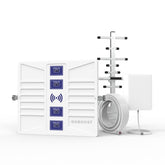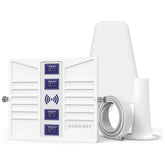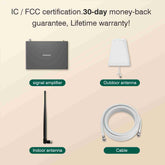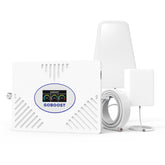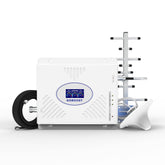GOBOOST Case Study: Signal Coverage Project for Offshore Support Vessels
GOBOOST Case Study: Signal Coverage Project for Offshore Support Vessels
Today, we would like to share with you in front of the screen a challenging and innovative project we have recently embarked on: providing comprehensive signal coverage for two offshore oil support vessels; offshore oil support vessels are specialized vessels used for offshore oil and gas exploration, development and production, which are often far away from land and sail into the depths of the ocean. Each vessel has four decks of cabins, and when entering deep-sea operations, the signal in the cabins is intermittent, causing great inconvenience to the crew's daily life.

Project Profile:
Project Location: Shenzhen
Client's Requirement: Complete the signal coverage of the ship; cover the cabin corridor signal, and triple-network all through
Coverage length: 1KM
Project Difficulties: Ocean-going oil support vessels, the metal structure of the hull blocks the signal.
Project leader said: the signal in the cabin is too poor, it is normal that there is no signal when operating at sea, but it is very annoying that there is no signal when docking for replenishment, so we contacted GOBOOST and hoped that we could solve the problem of triple-network communication.
Deep-sea voyage no longer lost contact: GOBOOST offshore oil support vessel signal coverage design solution
In order to solve the communication problems of offshore oil support vessels in deep blue sea, GOBOOST's technical support team designed a unique signal coverage program for this vessel. The signal coverage area of this project mainly covers the corridor of the two vessels, which is 440 meters in total, and covers each cabin; the signal coverage area of the two vessels is up to 2KM, and the goal of this design is to ensure that the crew members of the whole vessel can stably receive the communication signals during the deep-sea operation, so as to realize the smooth and convenient life and work at sea.


Signal Boosting Solution for Deep Sea--GBKW35A
In the design of signal coverage for de-sea oil support vessels, the choice of product solution is crucial. After analyzing the marine environment and the cabin environment, we chose the KW35A as the mainframe to meet the needs of communication in the cabin, which stands out with its metal waterproof and moisture-proof body and excellent heat dissipation performance, and is especially suitable for complex scenarios, such as basements, tunnels, islands and cabins.
Product Features:
Waterproof Metal Body: The KW35A is made of metal with excellent waterproof and moisture-proof performance, ensuring reliability in the humid environment of boat cabins.
Effective Heat Dissipation: The well-designed heat dissipation system enables the KW35A to maintain stable operation in high-temperature environments, which is especially suitable for special scenarios that require long working hours.
Tackle Complex Scenarios: The KW35A performs well in complex scenarios, whether it's in a basement, tunnel, island, or boat cabin, providing efficient signal enhancement.
Shopping List:
Wideband Log Periodic Antenna * 1
Plastic Omni-directional Antenna * 1
Indoor Ceiling Antenna N Female * 20
Accessories: connectors, etc.
On-site Installation: Customized Signal Amplifier for Deep Sea Oil Support Vessel
Install the receiving antenna at the high point of the vessel, the plastic steel omni-directional antenna can receive the signal 360°, which is suitable for use when going out to sea; the logarithmic antenna has directional limitation but the receiving effect is better, which is suitable for use when the vessel is docked and replenished.

Installation of Ceiling Antenna


Installation of signal booster

After installation, use the "CellularZ" software to check the signal value of the cabin again, and the RSRP value is increased from -115dBm to -89dBm, and the cabin can be used for normal calls and Internet access!


(RSRP is the standard value to measure whether the signal is smooth or not, generally speaking -80dBm or above is very smooth, -110dBm or below is basically no network)

